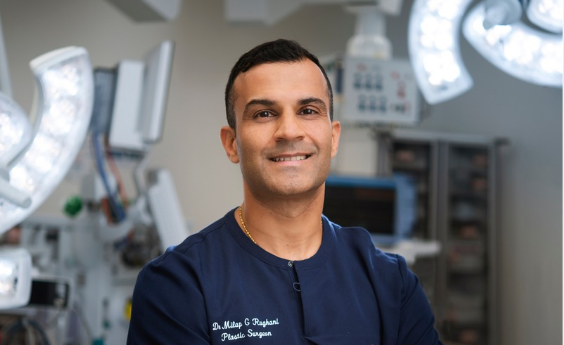Procedures
Abdominoplasty (cosmetic)
- About Your Specialist Plastic Surgeon
- Cosmetic
- Non-surgical Procedures
- Plastic Surgery Glossary
- Questions for Your Surgeon
- Reconstructive
- Surgical Procedures
- Abdominoplasty (cosmetic)
- Abdominoplasty (muscle repair postpartum)
- Arm Lift
- Body Contouring
- Body Lift
- Breast Asymmetry Correction
- Breast Augmentation (implants)
- Breast Implants with Lift
- Breast Lift
- Breast Reconstruction
- Breast Reduction
- Brow Lift
- Burns and Scarring
- Chest Surgery
- Chin Surgery
- Cleft Lip & Palate
- Ear Surgery
- Eyelid Reduction Surgery
- Facelift Surgery
- Facial Implants
- Facial Procedures
- Fat Injection
- Genital Reconfiguration Surgery
- Gluteal Augmentation or Buttocks Lift
- Gynaecomastia (male breast reduction)
- Hair Replacement Surgery
- Hand Surgery
- Labiaplasty
- Liposuction
- Lymphoedema Surgery
- Nipple Enhancement for Inverted Nipples
- Nose Surgery
- Scar Revision
- Skin Cancer
- Thigh Lift
- Tissue Expansion
- Voice Surgery
Abdominoplasty (cosmetic)
The aim of abdominoplasty, also referred to as a ‘tummy tuck’, is to change the shape and tone of the abdominal region. The procedure involves the removal of excess fat and skin. This procedure can be cosmetic or reconstructive in nature.
Any surgical or invasive procedure carries risks. Before proceeding, you should seek a second opinion from an appropriately qualified health practitioner.
The aim of an abdominoplasty is to remove excess skin and excess fat from the middle and lower abdomen and repair any separated muscles. The surgery can be very effective in reducing the bulge caused by excess skin, fat and loose abdominal muscles. The result is a flatter, firmer and more shapely abdomen.
Cosmetic or Reconstructive?
While abdominoplasty can be a cosmetic procedure, it may also be partly a reconstructive procedure that is necessary to:
- Correct abdominal abnormalities caused by pregnancy, obesity, extensive weight loss, trauma, tumours or other disease
- Correct or relieve structural defects of the abdomen
- Address the function of abdominal muscles
- Create a more normal appearance of the abdomen
- Repair an abdominal hernia that has followed previous abdominal surgery
- Remove a large and distressing apron of fat, also called a “pannus”, that can cause chronic dermatitis, skin infection, difficulty in walking and difficulties with hygiene. The surgical removal of a pannus is called an “apronectomy”
To ensure informed decision-making, it is crucial to consult a Specialist Plastic Surgeon before proceeding with abdominoplasty. This highly personalised procedure may not be suitable for everyone. During your consultation, the Specialist Plastic Surgeon will evaluate your condition, overall health, and provide recommendations for a tailored treatment plan that best suits your specific needs.
Abdominoplasty is not suitable for people who are:
- Not able to have an anaesthetic
- Prone to bleeding tendencies or have poor healing ability
- Too high risk of having surgical complications
For weight loss?
Abdominoplasty is not a substitute for weight loss or an appropriate exercise program. Keep in mind that while the results of the procedure are technically permanent, the positive outcome can be greatly diminished by significant fluctuations in your weight. For that reason, you may be asked to consider delaying the procedure if you are:
- Planning to get pregnant, as the result of the surgery may be lost
Abdominoplasty may be a good option for you if:
- You are physically healthy and at a stable weight
- You have realistic expectations
- You are a non-smoker or have stopped smoking
- You are bothered by the feeling that your tummy is too large
Yes, abdominoplasty is usually performed under general anaesthesia or under local anaesthesia with deep sedation. Modern anaesthesia is safe and effective, but does have some risks. Ask your Specialist Plastic Surgeon and anaesthetist for more information.
Your surgeon and/or anaesthetist will ask you about all the medications you are taking or have taken, and any allergies you may have for your surgeon and anaesthetist. Make sure you have an up to date list before the surgery.
Modern surgery is generally safe but does have the potential for risks and complications to occur.
Some risks and complications associated with abdominoplasty may include:
- Wound infection (treatment with antibiotics may be needed)
- Pain and discomfort around the incisions
- Haematoma (an accumulation of blood around the surgical site that may require drainage)
- Visible and prominent scars including keloid and hypertrophic scars. These are raised, red and thickened scars that may form over the healed incisions. They may be itchy, annoying and unsightly but are not a threat to health
- Numbness around operated sites. In most cases this is temporary and will improve over many months
- Areas of skin that do not heal and may require a skin graft
- Difficulty in bending forward due to the tightened skin. Other movements may also feel constrained
- Excess fluid accumulation under the skin (known as a seroma) around an operated site that may require one or more drainage procedures with a needle
- In the event of significant blood loss during surgery, it may become necessary to administer a blood transfusion.
- A blood clot in a leg or the chest (deep venous thrombosis) that will require further treatment. It is rare that a clot can move to the lungs and become life threatening
- Nausea (typically from the anaesthetics which usually settles down quickly)
The procedure is usually performed in a day-procedure clinic or a hospital. This depends on the complexity of your procedure. Hospital is an option for patients who need to stay for several days after the procedure.
Make sure you arrange for a relative or friend to drive you to and from the hospital or clinic. Someone should also stay with you for at least 24 hours after you return home, if the procedure is done in day surgery.
Before undergoing surgery, it is important that you:
- Be as fit as possible to help the recovery process
- Reach your optimal weight
- Check with your surgeon about your medications as some may need to be stopped
- Stop smoking at least two weeks before surgery. Smoking increases surgical and anaesthetic risk and delays healing of the surgical site
Requirements
You will also be asked to provide a complete medical history for your Specialist Plastic Surgeon including any health problems you have had, any medication you are taking or have taken, and any allergies you may have. Your surgeon will also advise you if any other tests are required, such as blood tests, X-ray examinations or ECGs.
You may be advised to stop taking certain medicines such as non-steroidal anti-inflammatory drugs (NSAIDs), aspirin, and medicines that contain aspirin. You may also be asked to stop taking naturopathic substances such as garlic, ginkgo, ginseng and St John’s Wort as they may affect clotting and anaesthesia. Always tell your surgeon EVERYTHING you are taking.
You may be given medicines to take before the surgery, such as antibiotics
Prepare a “recovery area” in your home. This may include pillows, ice packs, a thermometer and a telephone within easy reach. Make sure you arrange for a relative or friend to drive you to and from the hospital or clinic. Someone should also stay with you for at least 24 hours after you return home.
Following your surgery, dressings or bandages may be applied to your incisions. You may be wrapped in an elastic bandage or a compression garment to minimize swelling and to support your abdomen as it heals. A small, thin tube may also be temporarily placed under the skin to drain any excess blood or fluid that may collect.
Post Operative Instructions
Your Specialist Plastic Surgeon will give you specific instructions on post-operative care. These instructions may include:
- How to care for the surgical site and drains
- How to apply medications or how to take medications orally to aid healing and reduce the potential for infection
- Specific concerns to look for at the surgical site or in your general health
- When to follow-up with your surgeon
- Do not smoke. Smoking contributes to wound breakdown and delayed healing along with other health problems.
Questions to ask
Be sure to ask your surgeon specific questions about what you can expect during your individual recovery period, such as:
- Where will I be taken after my surgery is complete?
- What medication will I be given or prescribed after surgery?
- Will I have dressings/bandages after surgery? If so, when will they be removed?
- Are stitches removed? When will they be removed?
- When can I resume normal activity and exercise?
- When do I return for follow-up care?
Scars are the inevitable result of any invasive surgery. Your Specialist Plastic Surgeon will endeavour to minimise scarring and to keep your scars as inconspicuous as possible. By locating incisions in easily hidden sites, scars will be along natural skin lines and creases, and will usually fade with time.
In most cases, abdominoplasty procuedure does not need to be repeated. However, as with all surgical procedures, revisional surgery may be necessary to correct minor irregularities.
Cost is always a consideration in elective surgery. Prices for a tummy tuck can vary widely between Specialist Plastic Surgeons. Some factors that may influence the cost include the surgeon’s experience, the type of procedure used and the geographic location of the office.
Costs associated with the procedure may include:
- Surgeon’s fee
- Hospital or surgical facility costs
- Anaesthesia fees
- Prescriptions for medication
- Post-surgery garments
- Medical tests
Your surgeon should welcome any questions you may have regarding fees.
Abdominoplasty:
A surgical procedure to correct the apron of excess skin hanging over the abdomen
Apronectomy:
A surgical procedure to remove a large and distressing apron of fat (pannus)
Diastasis:
Condition in which abdominal muscles have separated
General anaesthesia:
Drugs and/or gases used during an operation to relieve pain and alter consciousness
Haematoma:
Blood pooling beneath the skin
Intravenous sedation:
Sedatives administered by injection into a vein to achieve relaxation
Liposuction:
Also called lipoplasty or suction lipectomy, this procedure vacuums out fat from beneath the skin’s surface to reduce fullness
Local anaesthesia:
A drug is injected directly to the site of an incision during an operation to relieve pain
Pannus:
A large and distressing apron of fat that can cause chronic dermatitis, skin infection, difficulty in walking and difficulties with hygiene
Sutures:
Stitches used by surgeons to hold skin and tissue together
Tummy tuck:
A colloquial term for abdominoplasty
Visit the Plastic Surgery Glossary for more medical terms.
This website is intended to provide you with general information only. This information is not a substitute for advice from your Specialist Plastic Surgeon and does not contain all the known facts about this procedure or every possible side effect of surgery. It is important that you speak to your surgeon before deciding to undergo surgery. If you are not sure about the benefits, risks and limitations of treatment, or anything else relating to your procedure, ask your surgeon to explain. Patient information provided as part of this website is evidence-based, and sourced from a range of reputable information providers including the American Society of Plastic Surgeons, Better Health Channel and Mi-tec medical publishing.
Featured Stories

ASPS welcomes new Ahpra guidelines for Non-Surgical Cosmetic Practitioners
Sydney. June 3, 2025: The Australian Society of Plastic Surgeons…
Continue reading


